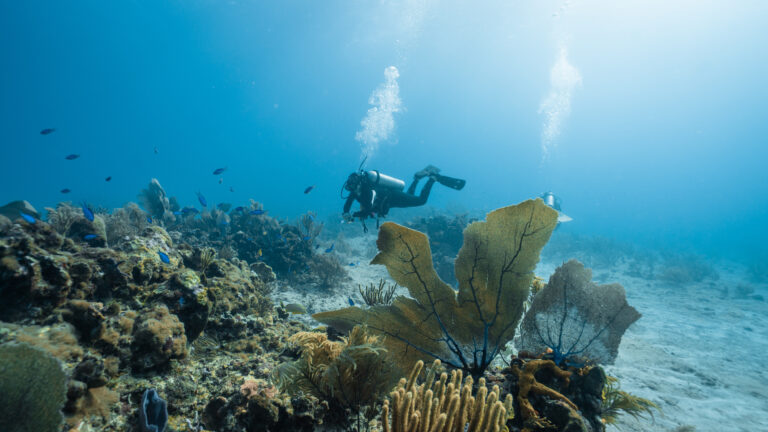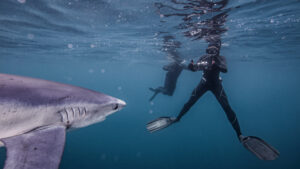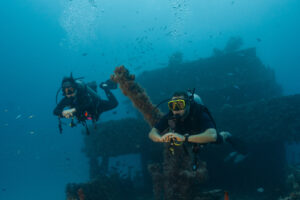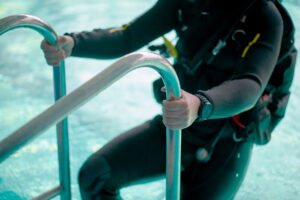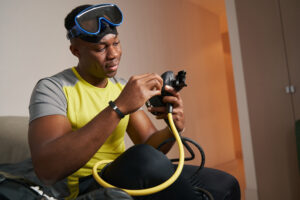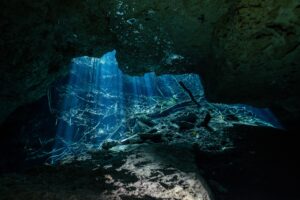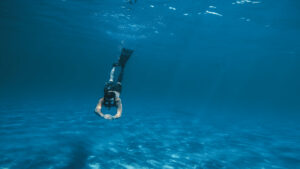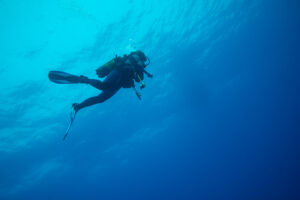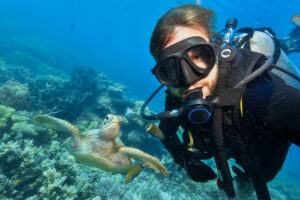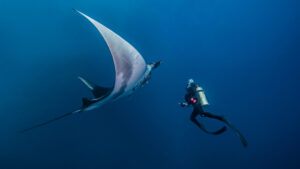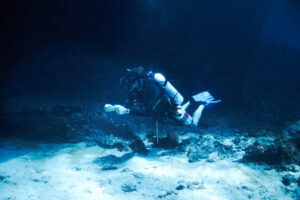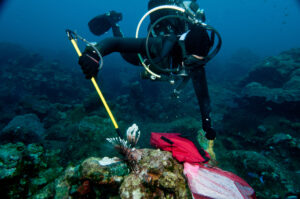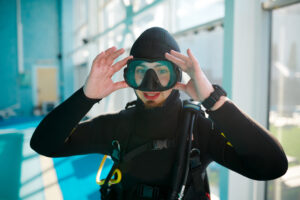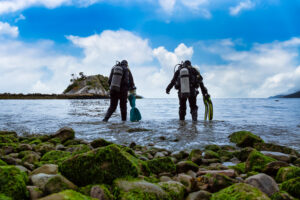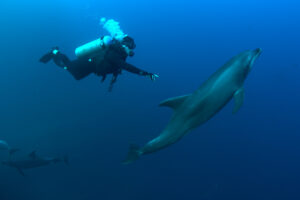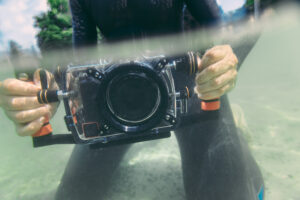What is Samba in Scuba Diving?
Samba, in the context of scuba diving, refers to an involuntary muscle spasm or twitching that occurs as a warning sign of impending hypoxia or loss of consciousness underwater. This condition is crucial for divers to recognize because it serves as a precursor to more serious and potentially life-threatening situations such as blackouts. Understanding samba and its implications can significantly enhance diver safety and preparedness, ensuring that appropriate actions are taken promptly to mitigate risks. While samba is less commonly discussed than other diving conditions, its impact on diver health and safety is equally important.
Definition and Symptoms of Samba
Samba is characterized by involuntary muscle spasms or twitching, often observed around the facial muscles, lips, and extremities. These spasms occur due to insufficient oxygen reaching the brain, signaling the body’s distress before more severe symptoms of hypoxia set in. Unlike nitrogen narcosis, which is caused by the narcotic effects of nitrogen under high pressure, or decompression sickness, which results from dissolved gases forming bubbles in the bloodstream, samba specifically relates to a lack of oxygen.
Divers experiencing samba may feel lightheaded or dizzy and might exhibit uncoordinated movements or difficulty focusing. Observers might notice twitching of the lips, facial muscles, or limbs, which can escalate to uncontrollable shaking if not addressed. Early recognition of these symptoms is vital, as they indicate that the diver is on the brink of losing consciousness, which can lead to drowning if not managed immediately.
Understanding the subtle differences between samba and other underwater conditions is essential for accurate diagnosis and appropriate response. While nitrogen narcosis often causes euphoria, impaired judgment, and hallucinations, samba presents as physical manifestations of oxygen deprivation. Decompression sickness, on the other hand, typically causes joint pain, rashes, and neurological symptoms but does not present with the same type of muscle spasms seen in samba. Recognizing these distinctions ensures that divers and their companions can take the correct actions to safeguard their health and well-being.
Causes of Samba
The primary cause of samba is hypoxia, a condition where the body or a region of the body is deprived of adequate oxygen supply. In scuba diving, hypoxia can occur due to several factors, including improper breathing techniques, overexertion, and equipment malfunction. Divers who fail to monitor their breathing gas mixture or exceed their planned dive limits may inadvertently increase their risk of experiencing hypoxia and, consequently, samba.
Physiologically, samba occurs when the partial pressure of oxygen in the blood drops below a critical threshold, leading to inadequate oxygen delivery to the brain and muscles. This condition can be exacerbated by factors such as cold water, which causes peripheral vasoconstriction, redirecting blood flow away from the extremities to maintain core body temperature. Overexertion during a dive, such as swimming against strong currents or carrying heavy equipment, increases oxygen consumption, further depleting the available supply.
Environmental factors also play a significant role in the onset of samba. Cold water diving, for instance, is particularly challenging because it not only affects buoyancy and mobility but also increases the body’s metabolic rate to maintain warmth. This heightened metabolic demand can lead to faster oxygen depletion, making divers more susceptible to hypoxia and samba. Additionally, diving at altitude or in areas with reduced atmospheric pressure can lower the partial pressure of oxygen, increasing the risk of samba.
Prevention Strategies
Preventing samba requires a combination of proper training, careful planning, and appropriate equipment use. One of the most effective prevention strategies is ensuring that all divers undergo comprehensive training and certification programs that cover the recognition and management of hypoxia and samba. These programs should emphasize the importance of controlled, rhythmic breathing and the avoidance of hyperventilation, which can lead to rapid oxygen depletion.
Careful planning is another critical component of samba prevention. Divers should always dive with a buddy and establish clear communication signals to alert each other of any distress. Pre-dive briefings should include discussions on the dive plan, maximum depths, bottom times, and emergency procedures. Divers should also monitor their air supply diligently and adhere to conservative dive profiles that allow for adequate decompression stops and safe ascent rates.
The choice of equipment can significantly influence a diver’s susceptibility to samba. Properly fitted wetsuits or drysuits help maintain body temperature, reducing the likelihood of hypothermia and its associated increased oxygen consumption. High-quality regulators that deliver air smoothly and consistently are essential to ensure adequate breathing gas supply. Additionally, divers should use dive computers to monitor their depth, time, and gas consumption, helping them stay within safe limits and avoid overexertion.
First Aid and Emergency Response
Recognizing the symptoms of samba and responding promptly can prevent a minor incident from escalating into a life-threatening emergency. If a diver exhibits signs of samba, it is crucial to initiate a controlled ascent to the surface while maintaining close contact and communication. The ascent should be slow and deliberate to avoid exacerbating the condition with a rapid change in pressure.
Once on the surface, the affected diver should be provided with fresh air and, if available, oxygen to help stabilize their condition. Keeping the diver warm and calm is essential, as hypothermia can compound the effects of hypoxia. Continuous monitoring for any signs of further deterioration, such as loss of consciousness or difficulty breathing, is vital. In such cases, immediate medical attention is required.
Post-dive care involves rehydration, rest, and monitoring for any delayed symptoms of decompression sickness or other complications. Divers who have experienced samba should refrain from further diving until they have fully recovered and undergone a medical evaluation to rule out any underlying health issues. Debriefing with the dive team to review the incident and identify any factors that may have contributed to the occurrence of samba is also beneficial for preventing future incidents.
Case Studies and Real-World Examples
Examining real-world cases of samba provides valuable insights into the conditions that lead to its occurrence and the effectiveness of various response strategies. One notable case involved a diver who experienced samba while exploring a wreck at a depth of 30 meters (98 feet). The diver, who was relatively inexperienced, began to feel lightheaded and noticed involuntary twitching in his fingers. His dive buddy quickly recognized the signs of samba and assisted him in making a controlled ascent to the surface. Once there, the diver was given oxygen and monitored for further symptoms. The quick response and adherence to emergency protocols prevented a more serious incident, highlighting the importance of training and vigilance.
Another case involved a seasoned diver who encountered samba while navigating a strong current in cold water. Despite his experience, the diver underestimated the physical exertion required to swim against the current and began to exhibit signs of samba, including facial twitching and uncoordinated movements. His dive buddy initiated an emergency ascent, and they surfaced without further incident. This case underscores the need for even experienced divers to respect environmental conditions and physical limits.
These examples illustrate that samba can affect divers of all experience levels and in various conditions. The common thread in each case is the critical role of a dive buddy in recognizing symptoms and assisting with a safe ascent. The lessons learned from these incidents have informed training programs and safety protocols, emphasizing the importance of preparedness and effective communication.
Key Takeaways
Understanding samba in scuba diving is crucial for ensuring diver safety and preventing serious underwater incidents. Recognizing the symptoms, knowing the causes, and implementing prevention strategies can significantly reduce the risk of samba. Prompt and effective emergency response, including controlled ascent and post-dive care, is essential for managing samba and safeguarding diver health. Awareness and education are key to enhancing diver safety and enjoying the underwater experience responsibly.

